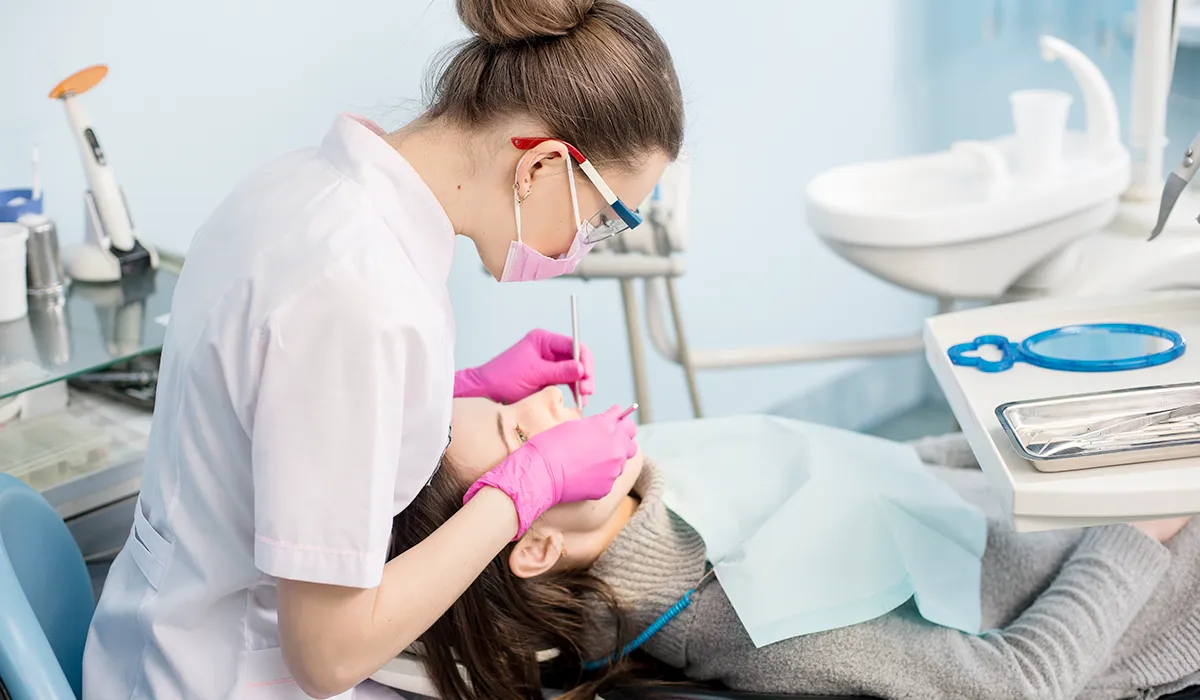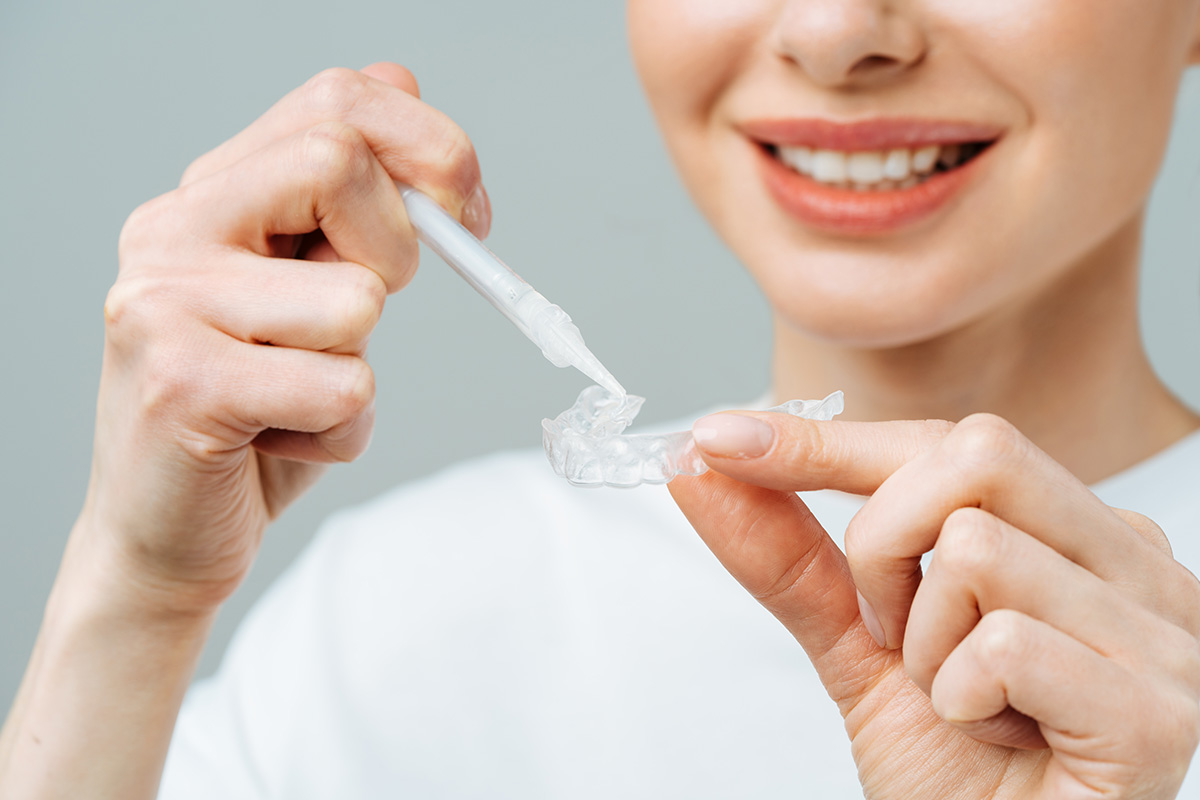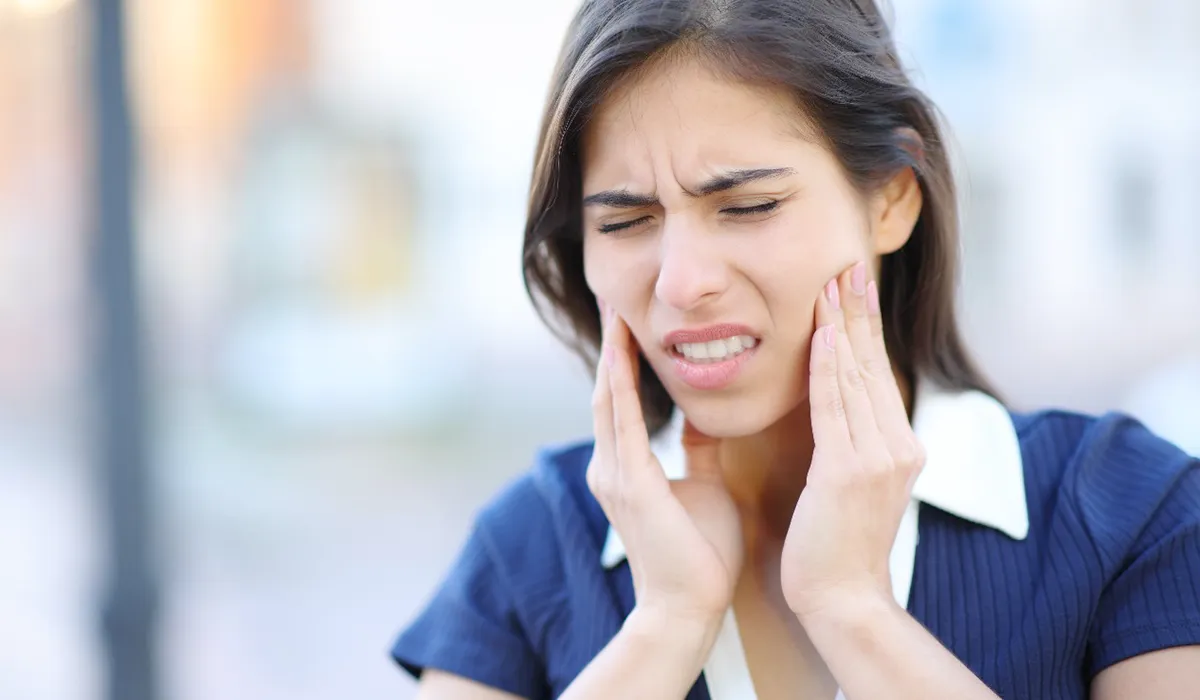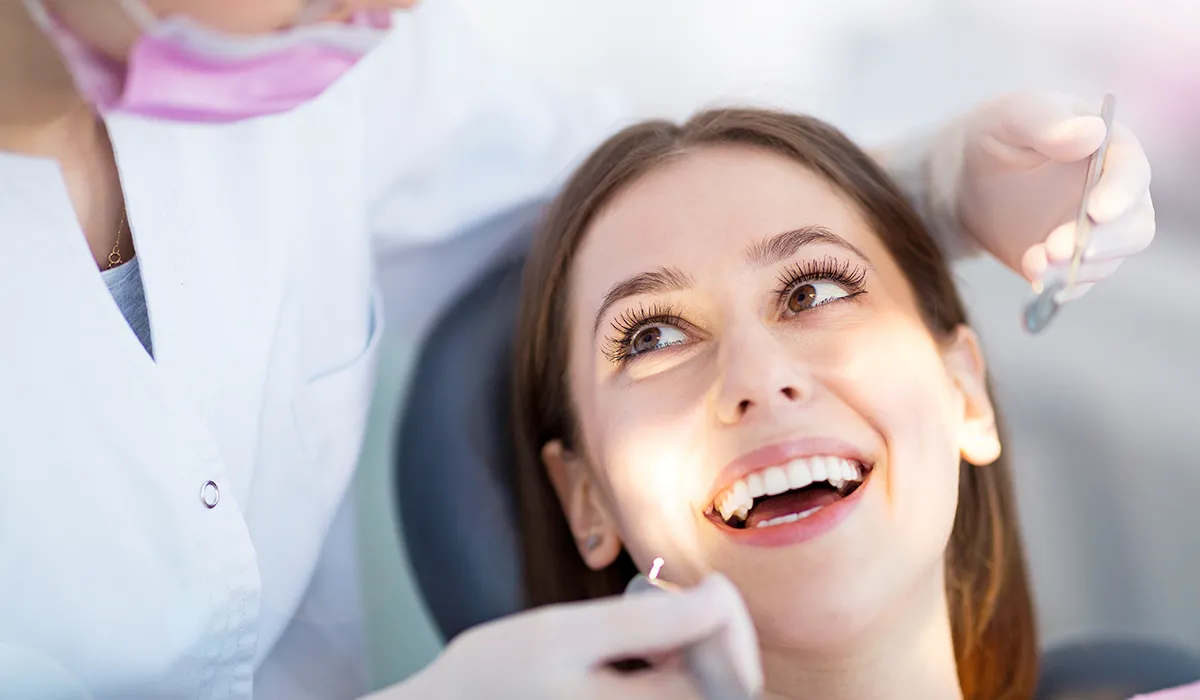A brighter smile starts with the right choice. Teeth whitening is one of the most popular ways to enhance your smile—and for good reason. A bright, white smile can instantly make you look healthier, more youthful, and more confident.
It’s no surprise that shelves and social media feeds are flooded with whitening products that promise dramatic results at home. But here’s what most of them don’t tell you: Whitening the wrong way can damage your teeth, irritate your gums, and lead to long-term oral health problems. The safest and most effective path to a whiter smile? Seeing your dentist first.
Whether you’re chasing a camera-ready smile for an event or simply want to freshen up your everyday look, the safest bet is always professional, dentist-supervised teeth whitening. Let’s take a closer look at why.
What exactly is teeth whitening?
Teeth whitening is a cosmetic dental procedure designed to remove stains and discolouration, improving the overall brightness of your smile. Discolouration happens over time from things like:

- Daily habits (coffee, tea, red wine, smoking)
- Natural ageing
- Certain medications (like tetracycline)
- Dental trauma
- Poor oral hygiene
Professional whitening treatments use bleaching agents like hydrogen peroxide or carbamide peroxide. These agents break down stain molecules in the enamel, helping your teeth appear several shades whiter. But just because the process sounds simple doesn’t mean it’s safe for everyone—or effective in every case—without proper guidance.
Why start with a dental consultation
Before any whitening treatment, a comprehensive dental check-up is essential. Here’s why your dentist should be the first step in your whitening journey:
- They can identify the cause of discolouration. Not all stains are created equal. Some—like internal discolouration from trauma or medication—won’t respond to traditional whitening and may require different treatment options like veneers or bonding
- They check for issues that could make whitening painful or risky. Cracked teeth, gum disease, or untreated decay can lead to sensitivity, pain, or even permanent damage when exposed to bleaching agents.
- They ensure safe, even results. Your dentist will assess restorations like fillings, veneers, or crowns—which don’t respond to whitening—and help you avoid a mismatched smile.
By starting with a consultation, you’re not just protecting your teeth—you’re giving yourself the best chance at safe, successful results.
Why a check-up and clean should come before whitening
Many people don’t realise that whitening treatments are far more effective—and safer—when done after a professional clean. Here’s why:

- Surface stains and plaque are removed. Whitening agents work better when your teeth are free of buildup that blocks access to the enamel.
- Oral health issues can be treated beforehand. You’ll avoid complications like tooth sensitivity or gum irritation caused by applying bleach to compromised teeth or inflamed gums.
- Your results last longer. A clean, healthy foundation allows whitening agents to penetrate evenly and deeply, enhancing and prolonging your results.
Think of it as preparing a canvas before painting—starting with a clean, smooth surface leads to better outcomes.
Two safe, dentist-approved whitening options
When it comes to professional whitening, you’ll usually have two options—both backed by research, training, and tailored care.
In-chair teeth whitening
Performed in the clinic by your dentist or oral health therapist (hygienist), in-chair whitening uses a highly concentrated bleaching gel activated by a special light. The treatment typically takes around 60–90 minutes and produces instant results.
- Immediate, visible results
- Safely supervised
- Custom gum protection
- Ideal for special events or quick transformations
Take-home whitening kits

These kits are prescribed and fitted by your dentist. They include custom trays designed to fit your teeth perfectly and a lower-concentration gel you use over 1–2 weeks.
- Whitening at your own pace, in the comfort of your home
- Great for sensitive teeth
- Long-lasting results with occasional touch-ups
- Less risk of irritation due to custom fit
- Excellent for maintaining your bright smile after an in-chair whitening treatment
Both options offer powerful whitening with minimal risks, unlike store-bought or online kits that lack customisation, professional oversight, and safety checks.
Why the ADA warns against DIY whitening products
The Australian Dental Association (ADA) has issued clear warnings about the use of over-the-counter and online teeth whitening products. These include whitening strips, pens, LED kits, and abrasive “natural” pastes that often make bold claims without regulation or supervision.

Here’s what the ADA is concerned about:
Unregulated concentrations. Some DIY products contain dangerously high levels of peroxide, which can burn soft tissue or damage enamel.
Poor instructions or no professional guidance. Without knowing how to use the product correctly—or if it’s right for you—you could cause harm.
No safety checks beforehand. Whitening teeth with untreated cavities, gum disease, or exposed roots can result in severe pain or complications.
Enamel damage from abrasive “natural” products. DIY pastes with charcoal, baking soda, or acid-based ingredients may remove surface stains but can also wear down enamel permanently.
The bottom line? If it’s not dentist-approved, it’s not worth the risk.
The real risks of DIY whitening
Tempted by a “miracle” product you saw on social media? Here’s what you’re really risking:
- Severe tooth sensitivity
- Chemical burns to gums, lips, and tongue
- Permanent enamel erosion
- Blotchy or uneven whitening
- Wasted money on ineffective results
Not everyone is a candidate for whitening
Did you know professional whitening isn’t suitable for everyone?
- Children under 18 should not undergo whitening as their teeth are still developing.
- Pregnant or breastfeeding women are typically advised to wait due to the lack of safety data.
- Patients with gum disease, decay, or worn enamel may require other treatments first.
Another reason why a dentist’s guidance is so important.
Keep your smile bright and healthy
Choose professional whitening and stick to your dentist’s advice. Teeth whitening isn’t just about appearances—what you choose directly affects your oral health. Under a dentist’s care, you get safer materials, proven techniques, and results that last. Cut corners, and you’re only cheating your smile.

But even the best whitening won’t last without care:
- Brush twice daily with fluoride toothpaste
- Floss once a day
- Avoid excessive coffee, wine, or smoking
- Rinse with water after staining foods
- Visit your dentist every six months
Whitening should never come at the cost of your health. Trust your dentist, skip the shortcuts, and you’ll enjoy a smile that looks good, feels good, and lasts.

